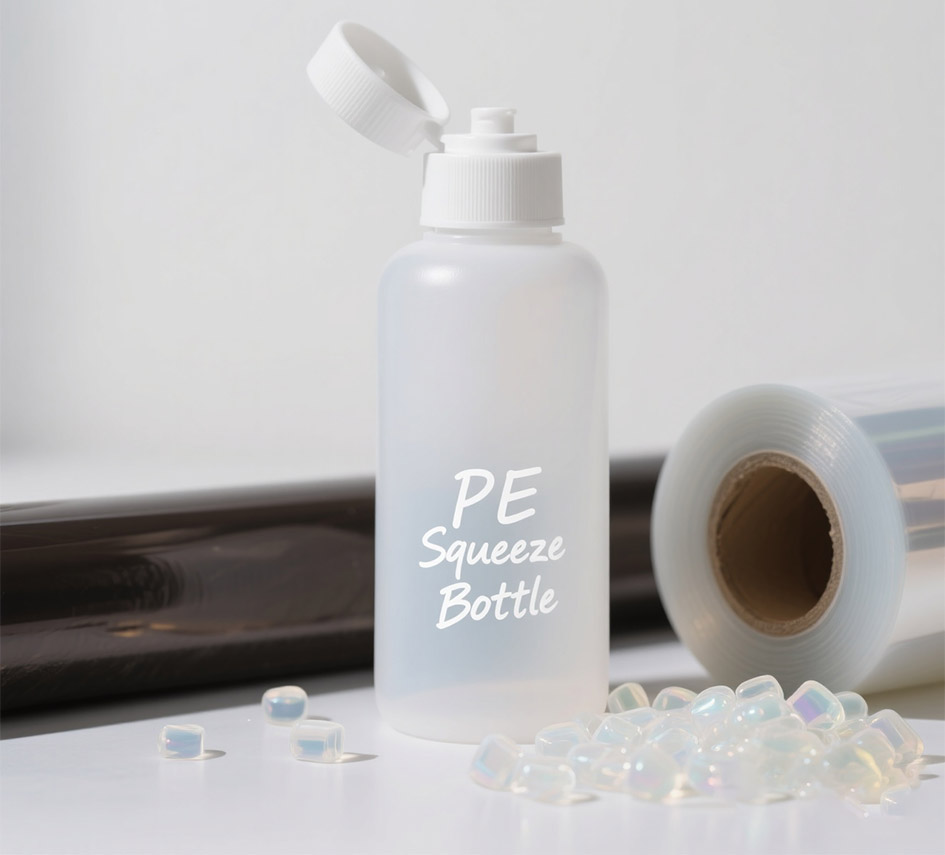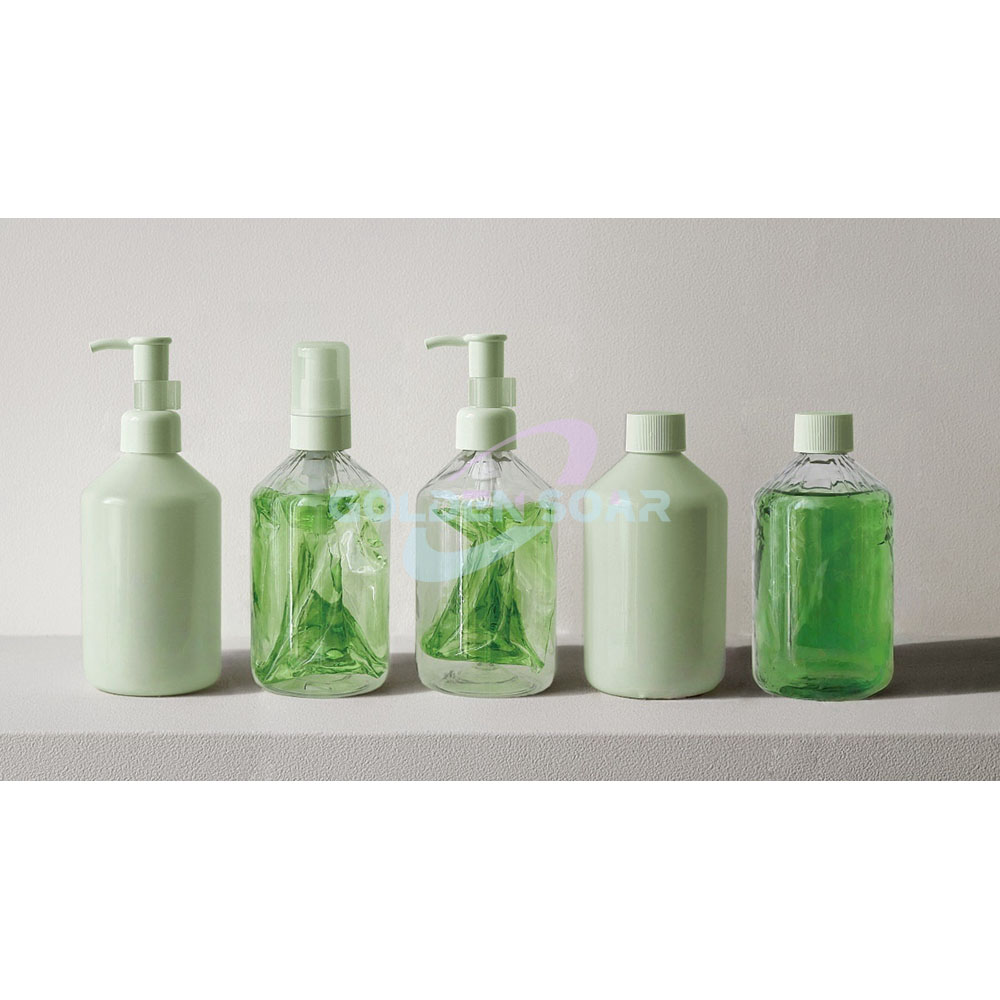
Currently in society
{In today's climate-sensitive landscape, the demand for eco-friendly packaging options is intensifying. A set of frequently utilized polymers in packaging are polyethylene (PE), PP plastic, and PET polymer. Each fabric offers unique specifications that make it ideal for multiple applications. Polyethylene is a adaptable plastic often used in liners, while polypropylene is known for its durability and is commonly found in boxes. PET, on the other hand, is crystal and slim, making it a popular choice for soda bottles.
{When electing sustainable packaging, it's important to examine factors such as the reusability of the substance, its sustainability score, and its effectiveness.
Gains of PET Packaging in Food and Beverage
{PET films have become a popular choice for the food and beverage industry due to their numerous upside. One key profit is its lightweight nature, which translates to reduced distribution costs and a smaller carbon footprint. PET is also greenly reusable, making it an environmentally eco-positive option. Furthermore, its transparent appearance allows for product visibility, enticing consumers and enhancing brand showcase.
- On top, PET's durability protects goods from damage during handling and safekeeping, ensuring freshness and quality.
- As a result of its barrier properties, PET effectively halts the entry of moisture, oxygen, and infiltrants, preserving product flavor and safety.
On the whole, PET covers offer a beneficial solution for the food and beverage industry, combining cost-effectiveness with nature-positive considerations.
Polypropylene Carriers: Resilience and Usefulness for Retail Goods
{Polypropylene packaging, commonly known as PP, has emerged as a leading choice for consumer goods due to its exceptional versatility and durability. The combination attributes make it ideal for a wide range of applications, from food packages to household supplies. The inherent strength of PP provides excellent protection against impact, scratches, ensuring the integrity of the product throughout its lifecycle. Furthermore, PP's ability to withstand a variety of temperatures and environmental conditions makes it suitable for both indoor and outdoor use.
- PP packaging offers a high level of recyclability, minimizing its environmental mark.
- Companies often utilize PP to create lightweight and compact packaging solutions, reducing transportation expenditures, and promoting eco-friendliness.
- The smooth surface of PP makes it easy to print on, allowing for clear and vibrant product naming.
Summarizing, PP packaging's combination of durability, versatility, and sustainability has firmly established it as a preferred choice for protecting and presenting consumer goods in today's market.
Aluminums' in Premium and Protective Packaging
{Aluminum has emerged as a principal material in the field of premium and protective packaging. Its inherent properties make it an ideal choice for safeguarding offerings during transport and storage. Aluminum's robustness provides exceptional security against surrounding factors such as moisture, oxygen, and light, ensuring product integrity and extending shelf life. Furthermore, aluminum's ornamental appeal contributes to the premium feel of packaged goods, enhancing brand acknowledgment.
Comparing Material Properties: PE, PET, PP, Aluminum
{Various plastics and metals possess distinct specialized characteristics that influence their applications. Polyethylene material, commonly known as PE, is renowned for its flexibility and low cost, making it suitable for packaging and casings. Polyethylene terephthalate typically labeled PET exhibits high durability and clarity, fitted in beverage bottles and textiles. Polypropylene element, or PP, demonstrates hardiness and chemical resistance, making it ideal for items like containers and automotive parts. Aluminum, a mineral, stands out due to its notable conductivity and recyclability, contributing to applications ranging from cans to construction materials.
Earth-Friendly Innovations: Biodegradable and Compostable Options
{In today's setting, it's more urgent than ever to minimize our impact on the planet. One way to do this is by opting for earth-conscious alternatives to standard products. Biodegradable and compostable options offer a superb solution to trash problems. These materials biodegrade naturally over time, restoring valuable nutrients to the soil.
- Cases of biodegradable and compostable products encompass food containers, envelopes, and even outfits.
- By choosing these possibilities, we can safeguard natural resources and develop a more eco-friendly future.
Advancements in Flexible Packaging: PE Films and Laminates
{The flexible packaging industry constantly strives to develop innovative solutions that meet the evolving demands of consumers and manufacturers. Polyethylene (PE) films and laminates have emerged as key players in this landscape, offering a wide range of properties such as strength, durability, barrier performance, and versatility. Recent developments in PE film technology have led to the creation of high-performance materials with improved puncture resistance, tear strength, and chemical resistance. These enhancements enable the packaging of a diverse range of products, from food and beverages to pharmaceuticals and personal care items.
- Additionally, advancements in lamination techniques have allowed for the integration of multiple layers of PE film with other materials such as substrates and metallized foils. This multi-layered approach enhances the protective capabilities of packaging, providing superior barrier properties against moisture, oxygen, and light.
- Accordingly, flexible PE films and laminates are increasingly being adopted in sustainable packaging solutions. Their lightweight nature reduces transportation costs and minimizes the environmental impact associated with packaging waste.
The Impact of Packaging on Sustainability: A Circular Economy Approach
{In an era defined by environmental consciousness, the impact of packaging on sustainability has come under intense scrutiny. Traditionally, packaging has been viewed as a linear system, where materials are extracted, processed, used once and then discarded. However, embracing a circular economy approach presents a transformative solution. Those paradigm emphasizes reducing waste by reusing, repairing, and recycling packaging materials, minimizing the depletion of resources and environmental impact. By implementing innovative design strategies and fostering collaboration across the supply chain, businesses can create a closed-loop system where packaging becomes a valuable resource rather than a source of pollution.
- A circular economy approach to packaging prioritizes the reuse and recycling of materials.
- Creative design strategies play a crucial role in minimizing packaging waste.
- Collaboration across the supply chain is essential for achieving a truly sustainable system.
Norms and Components for Packaging
{Packaging commodities are governed by a variety of rules designed to ensure the protection of consumers and the surroundings. These mandates often prescribe the types of components that can be used, as well as caps on packagingconfiguration to control potential hazards. Adherence with these lawsuits is crucial for creators to avoid fines. These regulations can vary from jurisdiction to jurisdiction, so it is imperative for businesses to evaluate the Silicone Packaging specific guidelines that apply to their commodities. A habitual aim of packaging rules is to promote green practices. This regularly involves backing the use of reclaimed goods and minimizing packaging waste.
Enhancing Packaging Efficiency
{In today's dynamic market, packaging/product containment are constantly seeking innovation/optimization/advancements to enhance both the performance/efficacy/effectiveness of their packaging and its environmental footprint. Lightweighting/Material optimization/Reducing density emerges as a key strategy in achieving this balance. By strategically/intelligently/carefully reducing the weight of packaging materials without compromising protection/integrity/security, manufacturers can achieve significant benefits/gains/advantages. These include lowered/reduced/diminished transportation costs, minimized/decreased/limited environmental impact through lesser/reduced/minimal resource consumption and waste generation/emissions, and improved/enhanced/optimized shelf appeal due to a more streamlined/compact/efficient design.
- Additionally/Furthermore/Moreover, lighter packaging can often lead to increased/enhanced/boosted product stackability, allowing for greater/more/superior storage efficiency and potentially lowering/reducing/minimizing overall shipping volumes.
Therefore/Consequently/As a result, investments/initiatives/commitments in lightweighting represent a strategic/forward-thinking/proactive step towards sustainable/eco-conscious/responsible packaging solutions that meet the demands of both consumers and the planet.
Choosing the Right Packaging Material: Factors to Consider
When it comes to packaging your goods, the choice of material is essential. It's not just about appearance; the right packaging needs to ensure your items during transit and fulfill specific requirements. Here are some key factors to think about:
- The nature of your goods
- Protective Capabilities
- Environmental Impact
- Monetary Factor
- Design Influence
By deliberately considering these factors, you can pick the perfect packaging material to highlight your products while offering their care. 